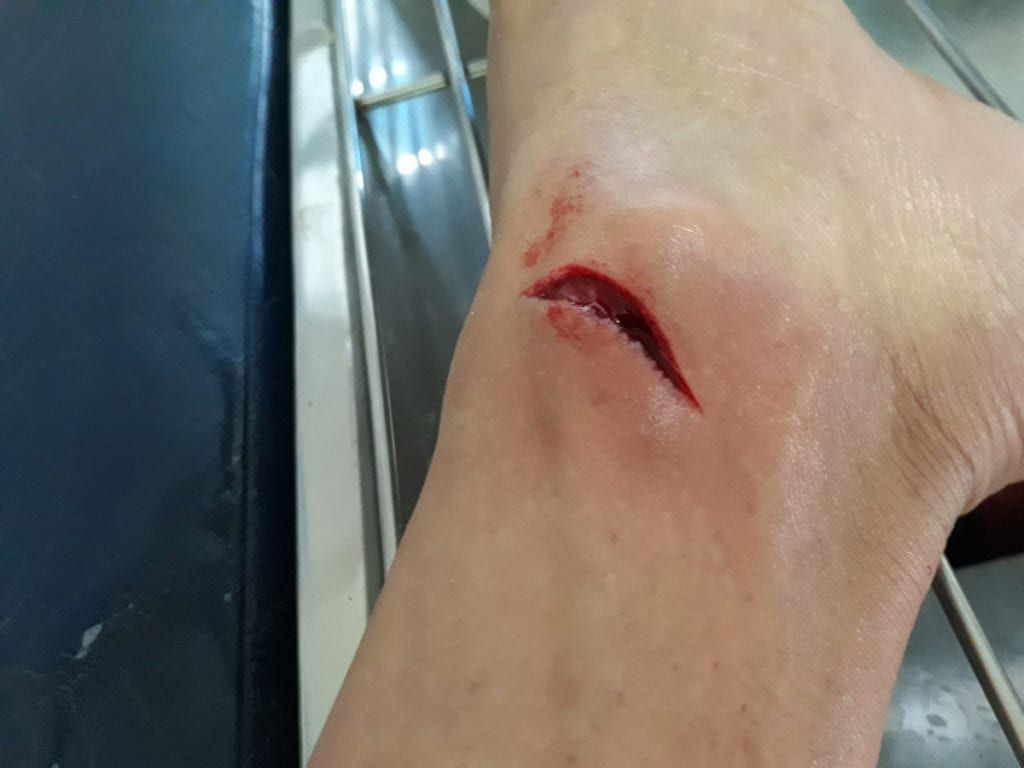Whether through work, play, or accident cuts and lacerations are common wounds that require a visit to a medical facility. If you’ve experienced a wound of this type, it’s important that you get help as soon as possible to help it heal quickly, cleanly, and with minimal scarring. The experts at MD First Primary & Urgent Care see hundreds of patients every year for cuts and lacerations, ranging from mild to severe. If you’re trying to determine if you need to see a physician for your injury, keep reading, call 1-803-238-2300, or stop by our clinic at 1130 Hwy 9 Bypass W in Lancaster, SC.
What Is The Difference Between A Cut and Laceration?
When the skin has been separated without a corresponding loss of tissue, it is classified as a cut. These kinds of wounds are typically caused by a clean, sharp edge, such as found on a knife or with sharp glass. Lacerations, on the other hand, are a wound that is jagged and torn without a corresponding loss of tissue. In practice, cut and laceration are often used interchangeably. When a wound involves the separation of tissue from the body, it is classified as an avulsion. While minor cuts and lacerations may not bleed, any severity of wound of this type can bleed.
What Symptoms Indicate A Cut Or Laceration?
Cuts and lacerations are typically very easy to diagnose, provided that they are not obscured by blood. As mentioned above, cuts are wounds where the skin was cleanly separated, while lacerations are a jagged separation of the same. Severe cuts and lacerations may result in the exposure of muscle, fat, tendon, or even bone. Loss of blood can result in hemorrhagic shock where the patient falls unconscious, though some people will faint seeing blood, even that of others.

When Should I See A Physician To Care For This Type of Wound?
The first thing you should do when a wound of this type occurs is to contact your physician to see if it might be necessary for you to have a tetanus booster. If you haven’t received immunization against tetanus in the last ten years, it’s critical that you do at this time, though even five years may be too long for particularly severe wounds. If you can’t stop the bleeding, the edges of the wounds are separated, you cannot adequately clean the wound, or more serious damage may have occurred, you should immediately get to a medical center. In cases where the laceration was caused by an animal bite, you’ll want to get the rabies shot if you aren’t aware of the animal’s health.
What Will My Physician Do If I Head to the Clinic?
When you arrive at the clinic or urgent care center, you’ll be examined to determine the severity of the wound. You will be asked for details about the wound, including when, how, and where the injury took place. Numbness and weakness will be checked to see if there is any underlying neurological damage, and you’ll be asked about pre-existing medical conditions. Following these steps, the wound itself will be examined to determine what steps will be needed to treat the wound, including an x-ray if a bone break is suspected.
If you’ve experienced a cut or laceration and are looking for guidance on what you should do, call us for an appointment immediately. If you feel the wound needs immediate treatment, but a trip to the emergency room isn’t necessary, you can stop in and our urgent care center for treatment.


